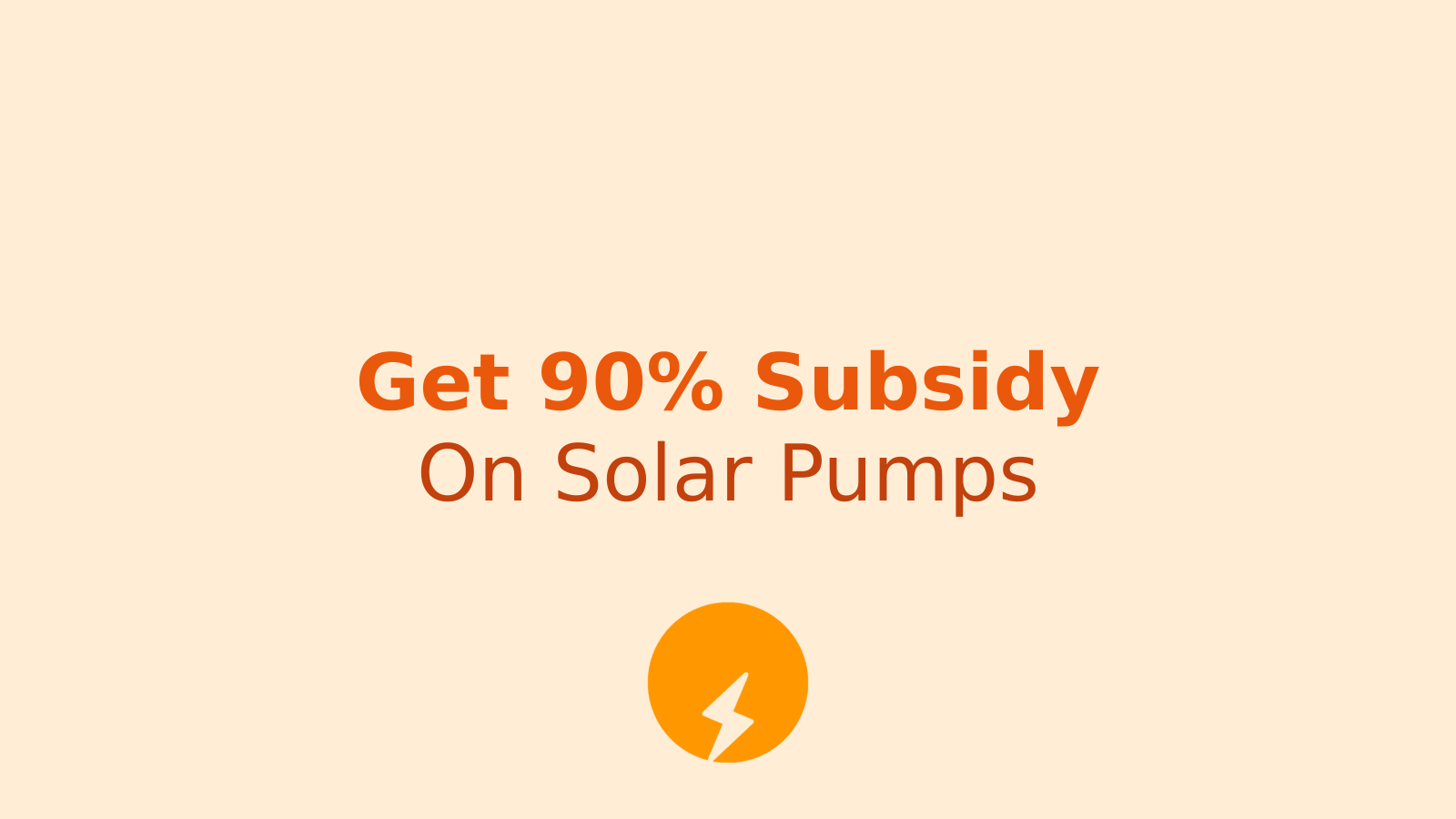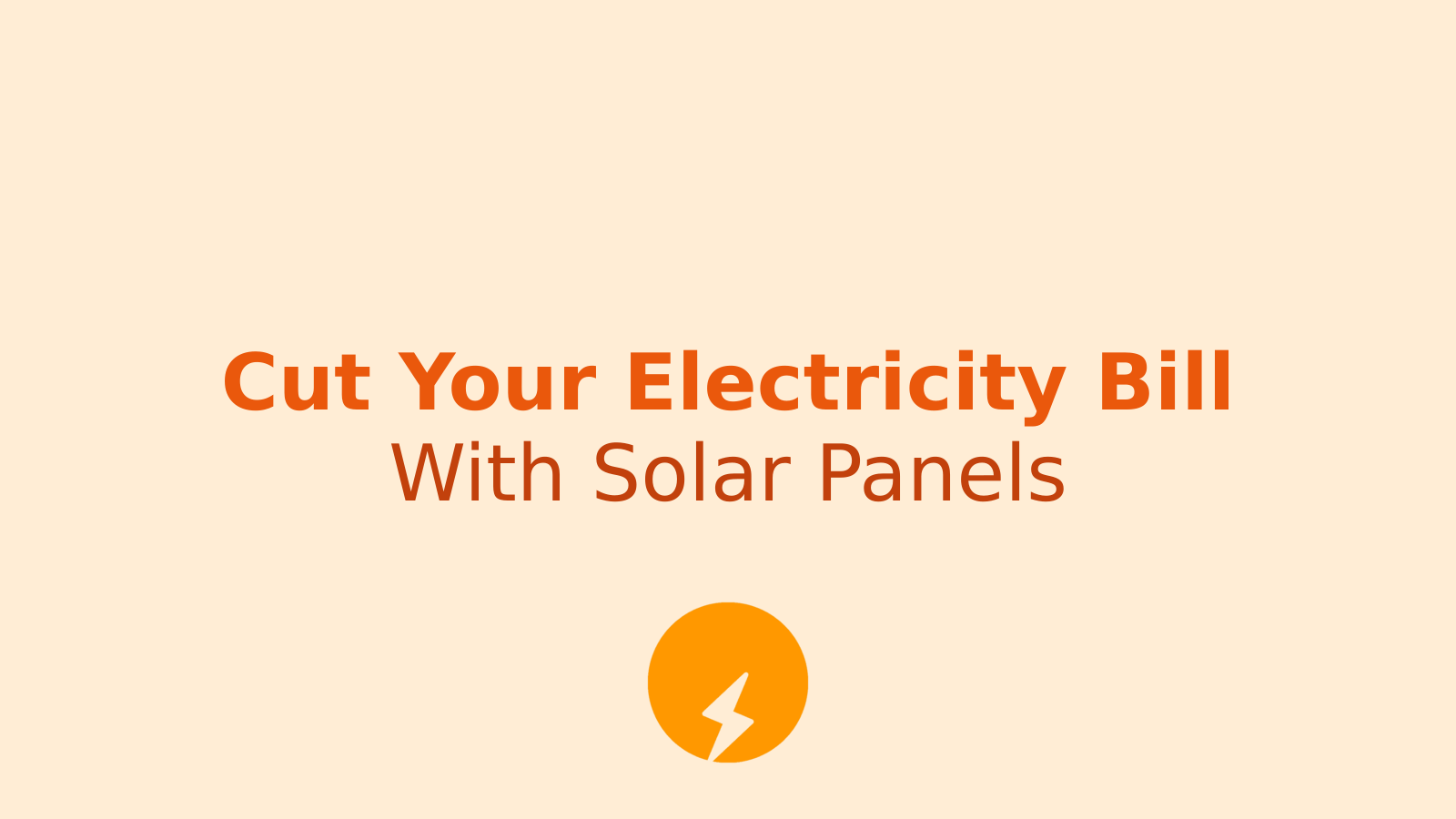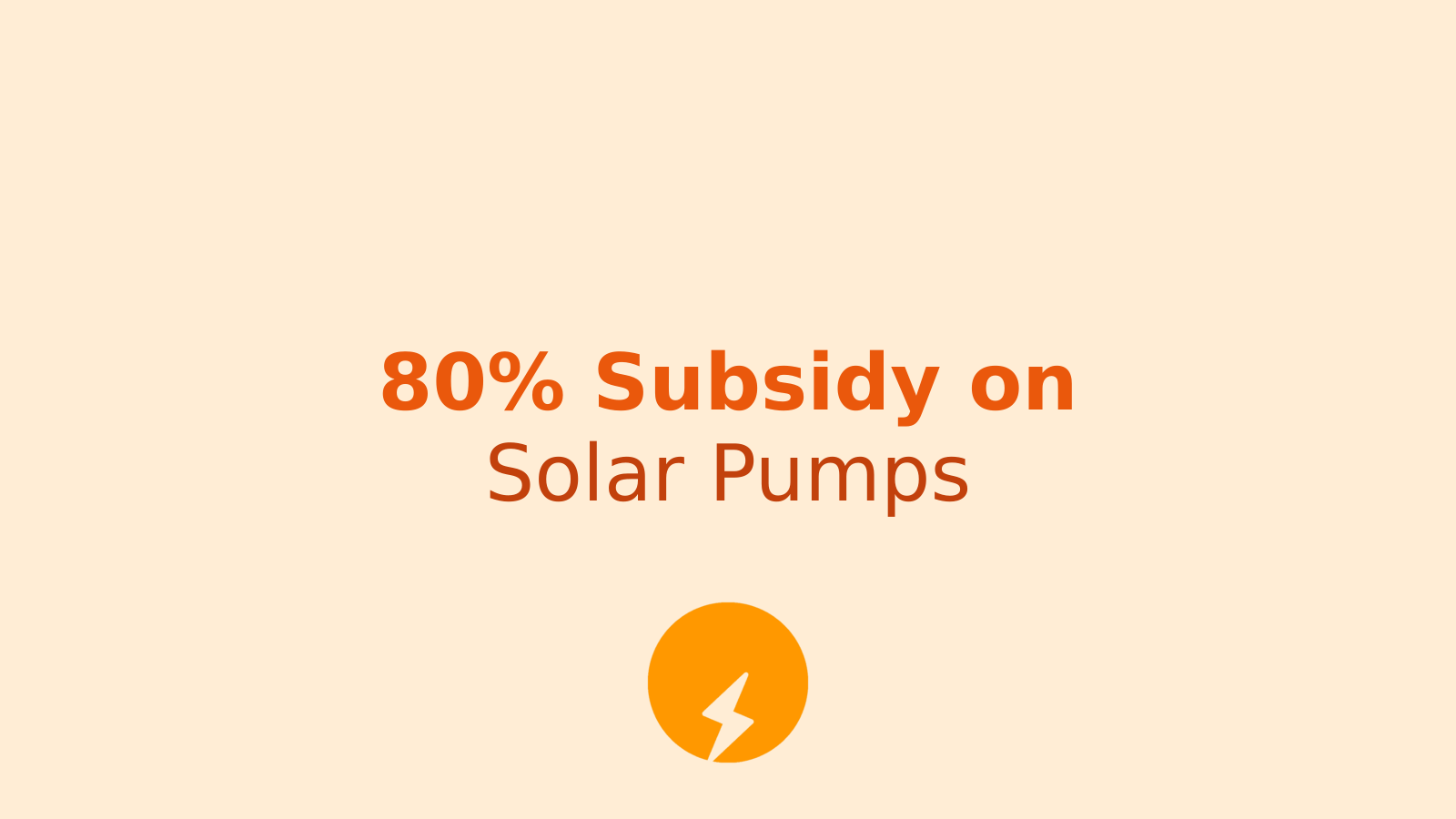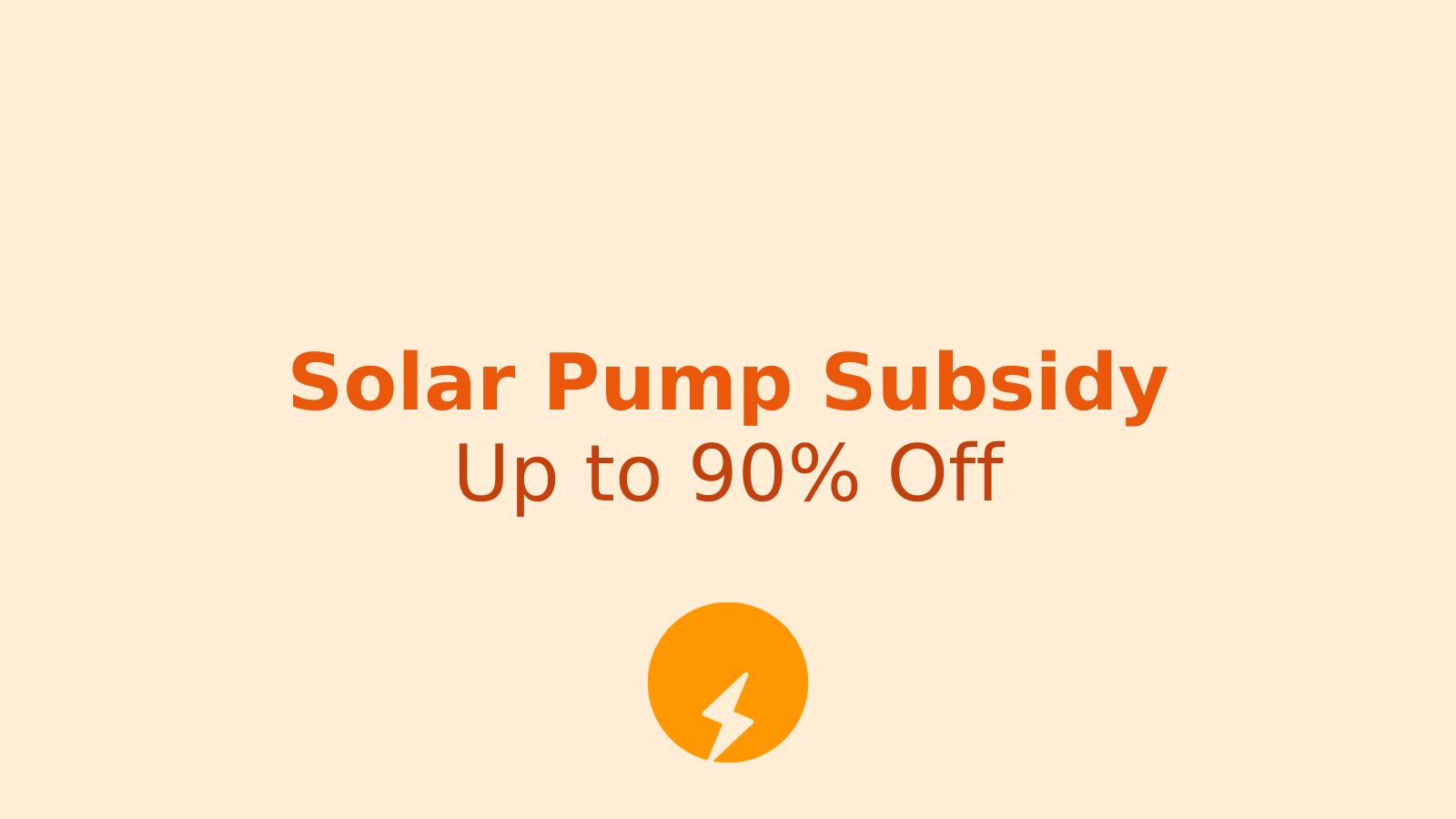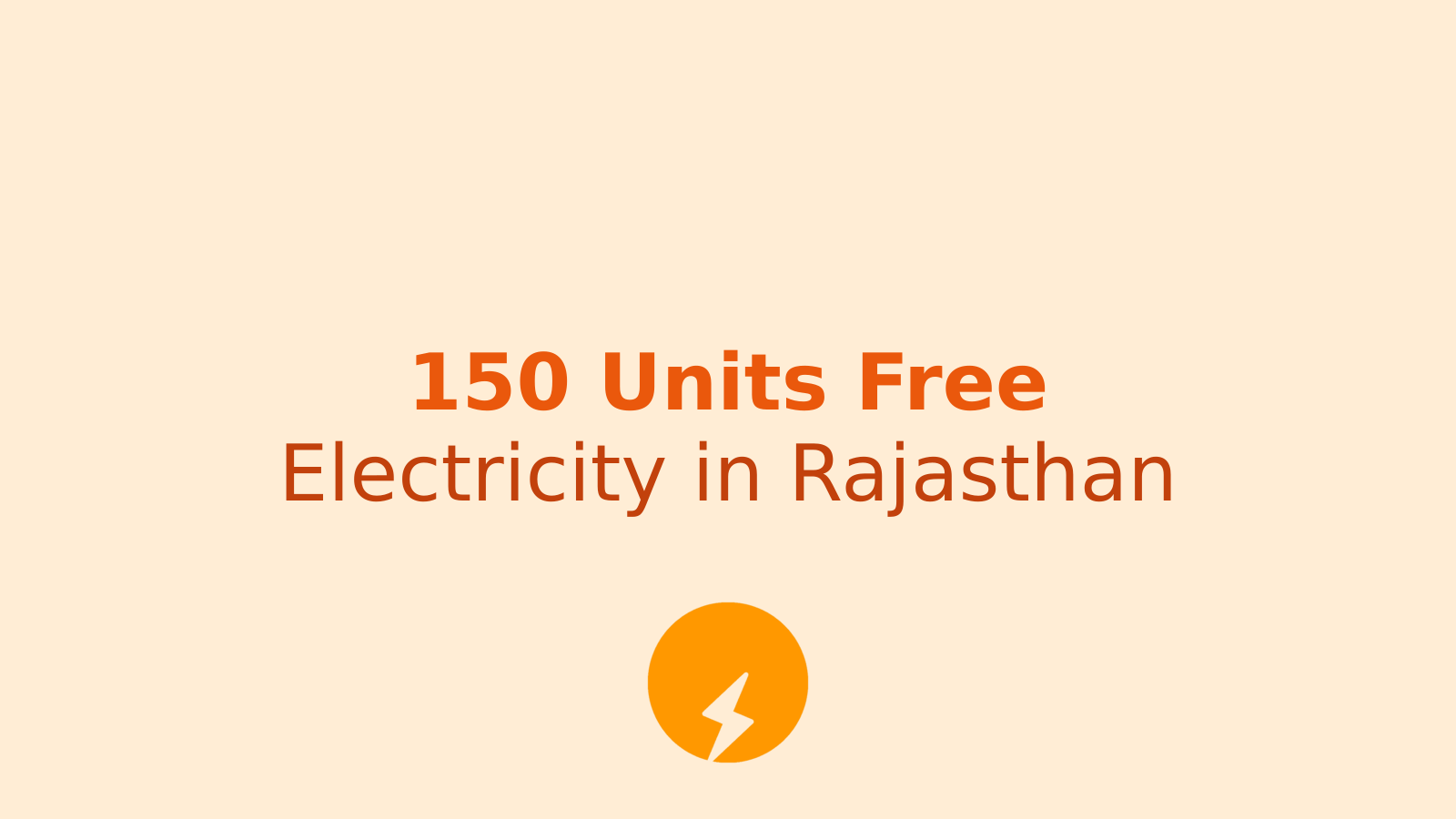Running a farm in India comes with its challenges. High electricity bills, unreliable power supply, and rising diesel costs make irrigation expensive. But what if you could cut these costs by up to 90%?
The central government launched the Solar Pump Subsidy Yojana to help farmers across India. This scheme, also known as PM Kusum Yojana, provides financial support to farmers who want to install solar pumps on their land.
If you're a farmer looking to reduce your irrigation costs and move towards sustainable farming, this guide will walk you through everything you need to know about this scheme.
What is Solar Pump Subsidy Yojana?
The Solar Pump Subsidy Yojana is a government scheme that helps farmers install solar-powered water pumps. The government launched this programme in 2019 under the Ministry of New and Renewable Energy.
The scheme aims to promote solar energy use in agriculture. Instead of relying on electricity or diesel, farmers can use sunlight to power their irrigation systems. This reduces costs and helps the environment.
Here's the best part: the government provides up to 60% subsidy on the total cost of installing a solar pump. Some states offer even higher subsidies, reaching up to 90% in certain cases.
Why Should Farmers Consider Solar Pumps?
Solar pumps offer several practical benefits that make them worth considering:
Lower Operating Costs
Once you install a solar pump, your daily running costs drop to almost zero. You don't need electricity or diesel to operate it. The sun provides free energy during the day when you need it most for irrigation.
Reliable Water Supply
Power cuts don't affect solar pumps. As long as the sun shines, your pump works. This reliability means you can water your crops on schedule without depending on the electricity grid.
Long-Term Savings
A solar pump lasts 20 to 25 years with minimal maintenance. After recovering your initial investment, you enjoy years of free irrigation. The subsidy makes the upfront cost much more affordable.
Additional Income
If your solar system generates extra electricity, you can sell it back to the grid. This creates another income stream for your farm.
Environment Friendly
Solar energy produces no pollution. By switching to solar pumps, you contribute to cleaner air and a healthier environment for your community.
Who Can Apply for This Scheme?
The government designed this scheme specifically for farmers. However, you need to meet certain conditions to qualify:
- You must be an Indian citizen
- You should own agricultural land where you plan to install the solar pump
- If you farm on rented land, you can still apply with proper documentation
- You need valid land ownership documents
- You must have a bank account linked to your Aadhaar card
Both small and large farmers can apply. The scheme doesn't discriminate based on farm size. Whether you have two acres or twenty, you're eligible if you meet the basic criteria.
What Documents Do You Need?
Before you start your application, gather these documents:
- Aadhaar card (mandatory for identity verification)
- Voter ID card or any other government-issued photo ID
- Bank account details with passbook copy
- Land ownership documents (Khata, Khasra, or land registry papers)
- If using rented land, bring the lease agreement
- Residence proof (ration card, electricity bill, or similar document)
- Recent passport-size photographs
- Mobile number registered in your name
- A declaration form (available on the portal)
Keep both original and photocopies ready. You'll need to upload scanned copies during online application.
How Much Subsidy Can You Get?
The subsidy structure varies based on your pump capacity and location. Here's the general breakdown:
The central government provides 30% of the total cost as a direct subsidy. Your state government adds another 30%, bringing the total to 60%. You pay the remaining 40% yourself.
Some states offer additional benefits. In certain regions, the combined subsidy reaches 70% to 90%, especially for small and marginal farmers.
Banks also help by providing loans for your share of the cost. This means you don't need to pay the entire 40% upfront.
For example, if a 5 HP solar pump costs ₹3,00,000, you would get ₹1,80,000 as subsidy (60%). Your contribution would be ₹1,20,000, which you can often finance through a bank loan.
Step-by-Step Application Process
Applying for the Solar Pump Subsidy Yojana is straightforward if you follow these steps:
Step 1: Visit the Official Website
Go to the PM Kusum Yojana official portal at pmkusum.mnre.gov.in. This is the central government website for the scheme.
Step 2: Register Yourself
Look for the registration link on the homepage. Click it to open the registration form. Fill in your basic details like name, mobile number, Aadhaar number, and address. Create a username and password for future logins.
You'll receive an OTP on your registered mobile number. Enter this OTP to verify your registration.
Step 3: Log In to Your Account
After successful registration, log in using your credentials. You'll see your dashboard with various options.
Step 4: Fill the Application Form
Select the option for solar pump application. A detailed form will open. Fill in all required information carefully:
- Your personal details
- Farm location and land details
- Type and capacity of solar pump you want
- Bank account information
Double-check all entries before moving forward. Errors can delay your application.
Step 5: Upload Documents
The portal will ask you to upload scanned copies of your documents. Make sure your scans are clear and readable. Upload each document in the specified format (usually PDF or JPG).
Step 6: Submit Your Application
Review your complete application one final time. Once satisfied, click the submit button. The system will generate an application number. Save this number carefully. You'll need it to track your application status.
Step 7: Track Your Application
Use your application number to check the status regularly. The authorities will verify your documents and conduct a site inspection of your farm.
Step 8: Receive Approval
After verification, you'll receive approval notification. The authorities will guide you about empanelled vendors who will install your solar pump.
Step 9: Installation and Verification
Choose a vendor from the approved list. They will install the solar pump on your farm. After installation, an official will inspect the setup to ensure it meets standards.
Step 10: Get Your Subsidy
Once the inspection is complete and approved, the subsidy amount will transfer directly to your bank account or to the vendor, depending on your state's process.
Common Mistakes to Avoid
Many farmers face delays because of simple errors. Avoid these common mistakes:
Incomplete Documentation: Missing even one document can stall your application. Gather everything before you start.
Wrong Information: Typos in your Aadhaar number, bank account, or mobile number create problems. Verify each entry twice.
Poor Quality Scans: Blurry or unclear document scans lead to rejection. Use a good scanner or camera in proper lighting.
Ignoring Follow-ups: Don't just submit and forget. Check your application status regularly and respond quickly if authorities need additional information.
Choosing Unverified Vendors: Only work with vendors approved by the government. Others might charge more or provide substandard equipment.
What Happens After Installation?
Your journey doesn't end with installation. Here's what you need to know about maintenance and operation:
Regular Cleaning
Solar panels collect dust and dirt. Clean them every two weeks with water and a soft cloth. This ensures maximum energy generation.
Check Connections
Inspect wire connections monthly. Loose connections reduce efficiency and can be dangerous.
Monitor Performance
Keep track of how much water your pump delivers. Any sudden drop in performance might indicate a problem.
Annual Servicing
Get your system checked by a professional once a year. This prevents major breakdowns and extends the pump's life.
Warranty Coverage
Most components come with warranties. Solar panels typically have 20-25 year warranties, while pumps have 5-7 year warranties. Keep your warranty documents safe.
Frequently Asked Questions
How long does the application process take?
From application to installation, the process usually takes 2 to 6 months. This varies by state and depends on how quickly you complete each step.
Can I apply if I already have an electric pump?
Yes. Many farmers replace their existing pumps with solar pumps to save on electricity costs. Your current pump type doesn't affect your eligibility.
What pump capacity should I choose?
This depends on your farm size, crop type, and water requirements. As a rough guide, a 3 HP pump suits 5-7 acres, while a 5 HP pump works for 10-15 acres. Consult with the technical team during your application for specific recommendations.
Will the pump work on cloudy days?
Solar pumps work best in direct sunlight. On cloudy days, output reduces but doesn't stop completely. Most systems include battery backup for such situations.
Can I move the solar pump to another location later?
Technically yes, but it's not practical. Installation involves significant setup. Moving the system is costly and may affect your subsidy terms. Choose your installation location carefully.
What if my application gets rejected?
You'll receive reasons for rejection. Fix the issues and reapply. Common rejection reasons include incomplete documents or ineligible land types.
State-Specific Benefits
Different states add their own benefits to the central scheme. Check with your state agriculture department for local advantages. Some states offer:
- Higher subsidy percentages for small farmers
- Additional subsidies for specific districts
- Priority processing for drought-prone areas
- Extra benefits for women farmers
- Group installation schemes for farmer cooperatives
Your local agriculture office can provide details about what's available in your area.
Real Impact on Farming
Farmers who switched to solar pumps report significant benefits. Here's what makes a real difference:
Your monthly expenses drop dramatically. One farmer from Maharashtra reported saving ₹6,000 per month on electricity bills. Over a year, that's ₹72,000 in savings.
You gain control over irrigation timing. No more waiting for electricity or rushing to finish watering before the power cuts. You water your crops when they need it, which improves yield.
The reliability helps during critical growth phases. When your crops need water most, your pump delivers without fail.
Many farmers report better crop quality because of consistent irrigation. This leads to better market prices and higher income.
Taking the Next Step
The Solar Pump Subsidy Yojana offers a practical path to modern, cost-effective farming. With up to 90% subsidy available, the financial barrier is much lower than buying a solar pump without support.
Start by checking your eligibility. If you meet the basic criteria, gather your documents. The online application process is user-friendly, but if you face difficulties, visit your nearest agriculture office. Staff there can help you complete the application.
Don't wait for the perfect moment. Electricity costs won't decrease, and diesel prices keep rising. The sooner you switch to solar, the sooner you start saving.
This scheme represents the government's commitment to supporting farmers and promoting renewable energy. Take advantage of it while it's available. Your future self will thank you when you see those reduced operating costs and reliable irrigation.
The sun shines on your farm every day. Why not put it to work for you?
Read more articles in News & Updates Category or in Oct 2025 Month

